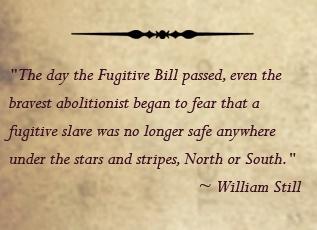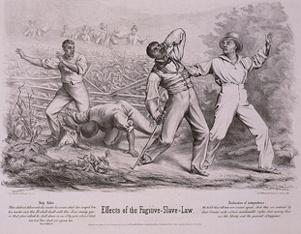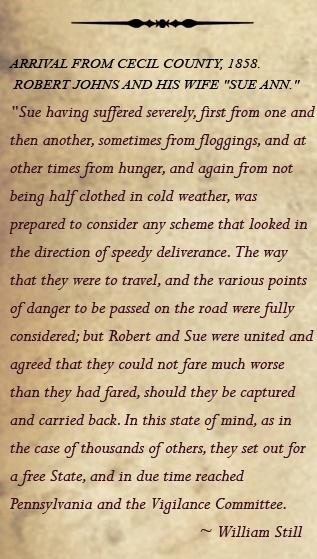
To Follow or Not to Follow?
Intermediate (grades 6-8)
1 - 2 class periods
Program Segments
The Fugitive Slave Act
Freedom's Land
NYS Core Curriculum - Literacy in History/Social Studies, Science and Technical Subjects, 6-12
Reading
Craft and Structure (Determine the meaning of words)
Writing
Text Types and Purposes (Write arguments focused on task, support claims)
Production and Distribution of Writing (produce clear stance on point of view)
Research to Build and Present Knowledge (Draw on Evidence to support argument)
NCSS Themes
II. Time, Continuity and Change
III. People, Places, and Environments
IV. Individual Development and Identity
VI. Power, Authority and Governance
VIII. Science, Technology, and Society
IX. Global Connections
X. Civic Ideals and Practices
Objectives
Students will be able to:
- define the Fugitive Slave Act of 1850
- explore the claims of law on personal conscience (right vs. wrong)
- consider the relationship between individual rights and the rule of law in contemporary society
Focus Questions
Is non-compliance of slave laws acceptable if slavery is considered immoral?
If you lived at the time of the Fugitive Slave Act, would you abide by or ignore the law?
Key Concepts
Fugitive, Law, Morality, Civil Disobedience
Instructional Resources
Underground Railroad: The William Still Story DVD
Poster or sign paper
Procedures
- Before the start of this lesson, place a poster sign on one side of the room that reads "AGREE" and a poster or sign on the other side of the room that reads "DISAGREE"
- Watch the Underground Railroad: The William Still Story segments on the Fugitive Slave Act.
- Select a few of the following statements, or some of your own, that would be appropriate for your students:
- Students should have to say the Pledge of Allegiance.
- Teachers can go into a student's locker at any time.
- Metal detectors should be allowed at school entrances.
- Students should not express their opinions in school.
- Students should wear a school uniform. - Read the statements aloud, then allow students to move to the side of the room that represents their belief. Students can share their their opinions on their decisions.
- Students should go back to their seats. Have a class discussion about individual rights and freedoms. Discuss school rules, or "laws," and rules/laws of society.
- Have students recall the segment from the program on the Fugitive Slave Act and answer any questions they might have. Guiding questions might be:
- How do you feel about slave owners or bounty hunters traveling around the country hunting slaves?
- How do you feel about free blacks being captured and taken to the South to be enslaved?
- Do you think you would have been a bounty hunter, sympathizer (abolitionist), or just stayed to yourself and abide the law?
- Ask students to once again choose "AGREE" or "DISAGREE" based on the Fugitive Slave Act. If students are not fairly evenly distributed, you may choose to move some students to the smaller group.
- The "AGREE" and "DISAGREE" groups should assign a note taker for each group. Allow 10-15 minutes to come up with reasons why the group is for or against the Fugitive Slave Act.
- Have a class discussion or debate based upon what the groups came up with.
- Each student should choose what they think are the four most compelling facts for their arguments and write an essay.
Assessment Tasks
The students will participate in a class debate. The students will complete an essay describing compelling facts for their argument.
Extension Activity
Explain why each one of the following people must have been brave. Choose the one that you would MOST want to be and explain why. Choose the one you'd LEAST like to be and explain why.
An enslaved mother who must choose which children she can escape with
A white man who has offered to help enslaved people on the Underground Railroad
A free black man who helps enslaved people on the Underground Railroad




Program Segments for Lesson Plan
Program segment for PBS Learning Media
Program segment for PBS Learning Media.
Bonus Video
The Fugitive Slave Act was an attempt by the government to appease southern slave states.
Underground Railroad: The William Still Story is a co-production of WNED PBS and 90th Parallel Productions Ltd, Toronto.
Underground Railroad: The William Still Story was made by The Canada Media Fund, Canadian National Railway, and the Corporation for Public Broadcasting – a private corporation funded by the American People. With additional support from David W. Pretty, Vernon Achber, and Phil Lind. And by PBS.